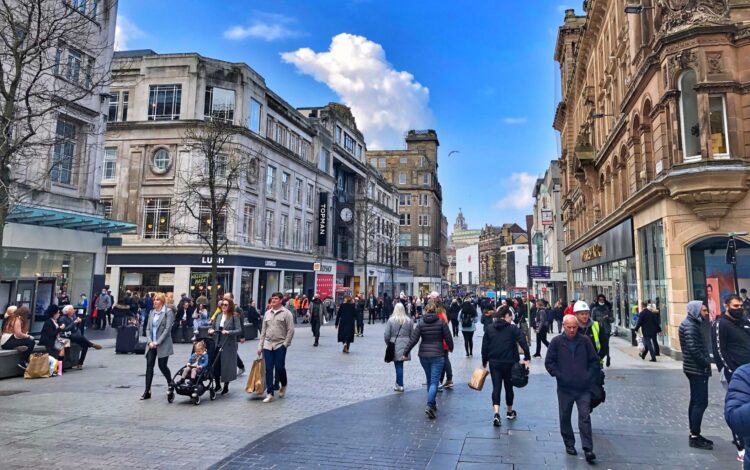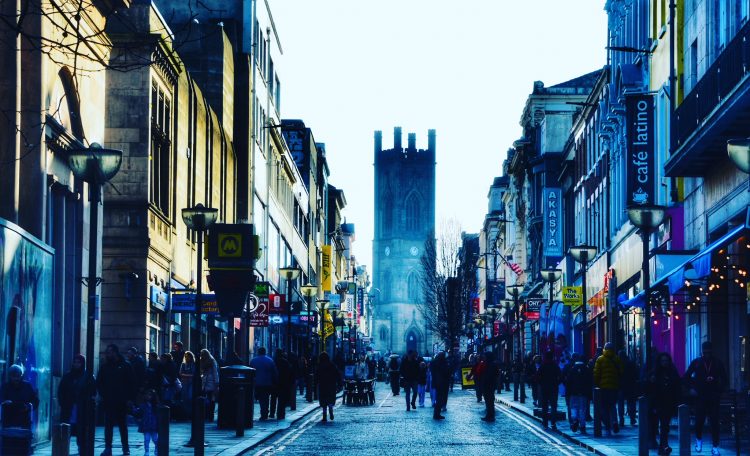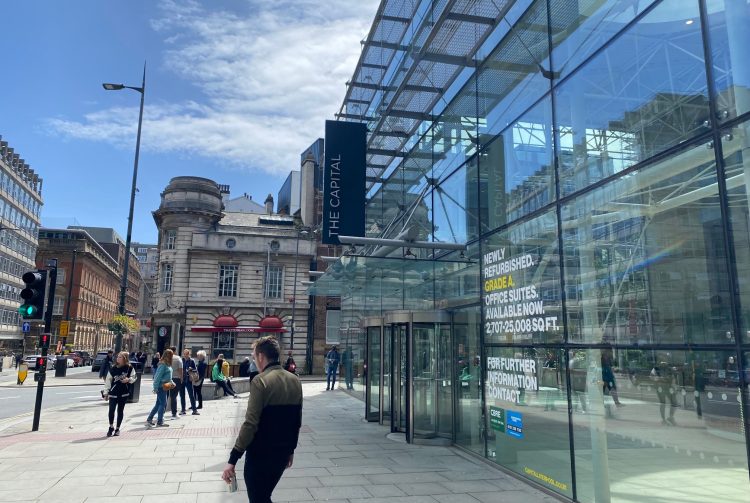Why BIDs are now critical to city centre prosperity
Business Improvement Districts first arrived in the UK two decades ago and now they play a critical role in the prosperity and evolution of our town and city centres, writes Liverpool BID Company CEO Bill Addy

It was back in 2003 that the late Paul Rice spearheaded a pilot project in Liverpool that would eventually morph into one of the UK’s first Business Improvement Districts (BIDs).
Sadly, Paul died in 2012 but the legacy of his vision and dynamism lives on in the work of Liverpool BID Company which, at the start of 2024, is now one of the key drivers of progress and prosperity in Liverpool city centre.
Between the Retail & Leisure BID, Culture & Commerce BID and the Accommodation BID we represent the interests of more than 800 businesses across Liverpool city centre.
In the early 2000s, the then Labour Government made funding available for regional development, and Merseyside was the recipient of billions of pounds of Objective ONE cash.
The desire and ambition to modernise Liverpool city centre, before Liverpool ONE, was at the forefront of Paul’s mind, along with Ed Oliver and David Wade-Smith from the Liverpool Stores Committee.
With partners including Liverpool Chamber of Commerce they secured funding from the Northwest Regional Development Agency to establish what was then called City Central, covering the retail heart of the retail district.
This encompassed Church Street and the surrounding area, which also included St Johns Shopping Centre and Clayton Square.
BID legislation was passed by Parliament in 2004 and the first BID proper, voted for by local businesses, was established here in Liverpool in 2005.
Pioneered in Canada in the US in the 1970s, BIDs are designated zones in towns or city centres and they provide extra services such as security or street cleansing. They also act as a powerful lobby voice for member businesses.
It was the intention of the Labour Government to leverage additional resources and investment from businesses for towns and cities.
Rather than implementing a supplementary business rate which would have felt like another public sector cash grab, the BID legislation made sure it was private-sector led.
Liverpool’s first BID covered the retail district of the city centre and later a second BID was added covering the commercial sector, centred around Old Hall Street. They operated separately under the umbrella of the Liverpool BID Company.
I joined as chief executive of Liverpool BID Company in 2013 and over the next couple of years we made two major changes that I believe transformed both its effectiveness and status as an independent voice for local businesses.
Firstly, we brought the two BIDs together as one team. It made far more sense to bring the two together. When I joined the two BIDS were sitting in one office but were duplicating staff. There was no single BID website or uniform email addresses. It didn’t make sense.
2016 was the last year we got financial support from the city council. From then on the BID became a self-funding organisation and we are now a dynamic organisation with a turnover of more than £3m. The council’s only input financially is as a levy-payer itself.
BIDs have to be renewed with a vote every few years. We are funded by businesses who pay a levy on top of their business rates. Only those with a rateable value of £45,000 have to pay the levy. The threshold was originally £10,000.
Today the BID provides a connected, cohesive voice for business. Our Culture & Commerce BID now includes the whole of the waterfront from ACC Liverpool to Princes Dock as well as the commercial district and St George’s Quarter. Retail & Leisure goes all the way through Hardman Street up to Hope Street.
It gives that cohesive voice for the private sector. It also means we are a major stakeholder with the city council. When the council seeks funding, for example for Eurovision, they are able to call on the BID to provide financial support.
We also partner with the Combined Authority (CA) and provide significant funding for destination marketing. So we are putting £600,000 in and that is match-funded by the CA for a three-year Strategic Investment Fund (SIF).
It is the same with business subvention (support funding). The Accommodation BID is providing funding which is matched by the Culture and Commerce BID and the CA for the Growing Business Visits SIF.
We are able to deliver things such as the Waterfront Positioning Paper which we published in October. This called for a “unifying vision” for the ongoing development of the waterfront.
Key to the waterfront document was giving a voice to the individual stakeholders. The Culture and Commerce BID connects all of those waterfront stakeholders together – from ACC Liverpool right through to Liverpool Waters.
Those organisations on their own could put out that message but it is far stronger when it comes from all us together. We can provide the voice for the city centre and work with other stakeholders and deliver programmes of our own.
We are just putting away the Christmas lights. The contribution to Christmas lights from the city council is now just £15,000. All of those lights from Chapel Street up to Hope Street are paid for by businesses through the BID.
Our Accommodation BID covers the whole of the city centre – all hotels with a rateable value of more than £45,000 pay the levy.
So we have the arena and convention centre in the city and that needs subvention money. It used to get more than £1m a year from the public sector. The money is used to enable big conferences to come to Liverpool.
That is a very competitive and worldwide market. That is why the Accommodation BID is so important. It makes sense for the hotels to fund that subvention because the more events ACC Liverpool brings in the more business they will get.



At the moment we are also getting matched support from the CA. Without the private sector putting money in the public sector wouldn’t. It is about that mature relationship with the public sector.
It is important to say that the city centre is a driver for the whole city region. If you don’t have a healthy city centre then you won’t have a healthy city region.
Of course we have the Open Golf Championship going to Hoylake and Birkdale. They are both brilliant events but the infrastructure for events such as those is here in the city centre.
They would not be able to operate those events as successfully if they didn’t have the hotels and the restaurants and all the other amenities people expect and a city can provide. Same goes for the Grand National.
I am very optimistic about Liverpool’s prospects. I think we are in a good position. Of course there are still significant headwinds we have to tackle – the cost of living crisis and an impending General Election.
But right now we have public and private sectors in Liverpool that are in alignment. As long as there are people who care about the city centre then there will always be a vision.
Bringing Grosvenor in to build Liverpool ONE was a tremendous achievement for the city. Liverpool ONE is a great success but there has been an impact on the rest of the city.
How do we build those links out to places such as London Road? The whole of the city centre has to benefit.
We engage with businesses on a daily basis and that includes the smaller non levy payers as well. They benefit in terms of street cleaning and lighting etc and we do listen to what they have to say.
READ MORE: Sports Direct acquires former Liverpool M&S store
It is very important that we do listen to our businesses. We are about to launch our next perception study. We have three operating boards plus an executive board so we provide oversight and management.
Those boards include the levy-payers, everyone from Bruntwood, Marks & Spencer, St John’s centre and Metquarter are all included. We are always open for conversation.
Liverpool BID Company has matured over the years. There are more than 340 BIDs nationally, generating levy funds of around £150m. On a national basis the BID are now very much part of the whole placemaking framework.
BIDs have the ability to respond to the evolution of the high street and support businesses through those changes.
BIDs are now a vital element in managing town and city centres. If it wasn’t for BIDs there wouldn’t be Christmas lights in many places. Public sector money just isn’t available in the way it used to be. That is why BIDs are so important.

